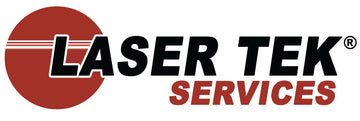The type of paper used as print medium is critical to any application. From the print out of regular letter documents and marketing collateral in laser printers to print jobs involving monochrome and color photographs – down to commercial printing; the transparency utilized for a particular print job reveals the intentions of the material being disseminated. To put it more bluntly, the type of paper used determines the importance of the message printed on it.
For inter-office memos, an uncoated, multi-purpose type of paper will suffice as only resident personnel are privy to it. But for brochures, flyers, signages and press kits; high gloss paper must be used to catch the attention of prospective clients or intended publics. Moreover, high quality paper with sophisticated finish is often required for invitations, annual report covers and stock certificates, among others; given the formality by which these documents are being distributed.
Paper Quality Classification
The category under which paper quality falls has been subdivided into three types, where each category comes set with distinctive characteristics to fit the various printing requirements of users. The 3 categories are as follows:
A Grade Papers. High white, smooth and bright surfaces typically describe paper grouped into this category. Used primarily for corporate letterhead, business cards and other prestigious documents, A grade papers can be fed to different kinds of printers – both inkjets and laser printers included.
B Grade Papers. Though not as refined as A Grade in quality in terms of finish, transparencies classified under this category are considered good quality paper that is intended for the print out of internal reports and other communications. This type is preferred for use on monochrome printers.
C Grade Papers. Paper classified under C Grade have inferior finish properties (if coated) to become the opposite of Paper Grades A and B. Utilized mainly for regular print jobs such as an inter-office memo and random computer printer printouts, C Grade types of paper are designed primarily for high volume printing (printer jams are seldom encountered) but cannot compete in appearance to Grades A or B.
Depending on the significance of the document to be printed, users must be conscious to pick the right paper quality to commensurate particular requirements.
Additional paper classification
Paper can also be classified as soft gloss, high gloss color laser papers, photo gloss paper and the realistic non-tear paper.
- Thinner, Soft Gloss Paper carries a weight rating of 40 lbs and typically used for covers on single sided documents.
- High Gloss Laser Paper sports an appearance similar to magazine pages incorporated with the thinner 40 lb. or the heavier 58 lb. laser gloss.
- Photo Gloss Paper produces a mirror-like, photographic gloss with its output.
- Non-tear Paper is durable and is indistinguishable from the normal fiber based paper; is uncoated and does not feel like plastic. It is also tear-resistant, grease-resistant and water-resistant.
Always remember though that the lesser pages we print results in the reduced number of trees cut down because paper is a wood fiber based office consumable.
Below is a satire depicting the use of an appropriate transparency over machines that use static electricity, toner, drum and heat to produce image on paper.
To produce decent laser prints and yield at a reasonable price, refill OEM toner cartridges with toner refill kits. The toner refill kit line of Laser Tek Services is cheaper by as much as 80% than the prevailing retail price of OEM toner cartridges.




